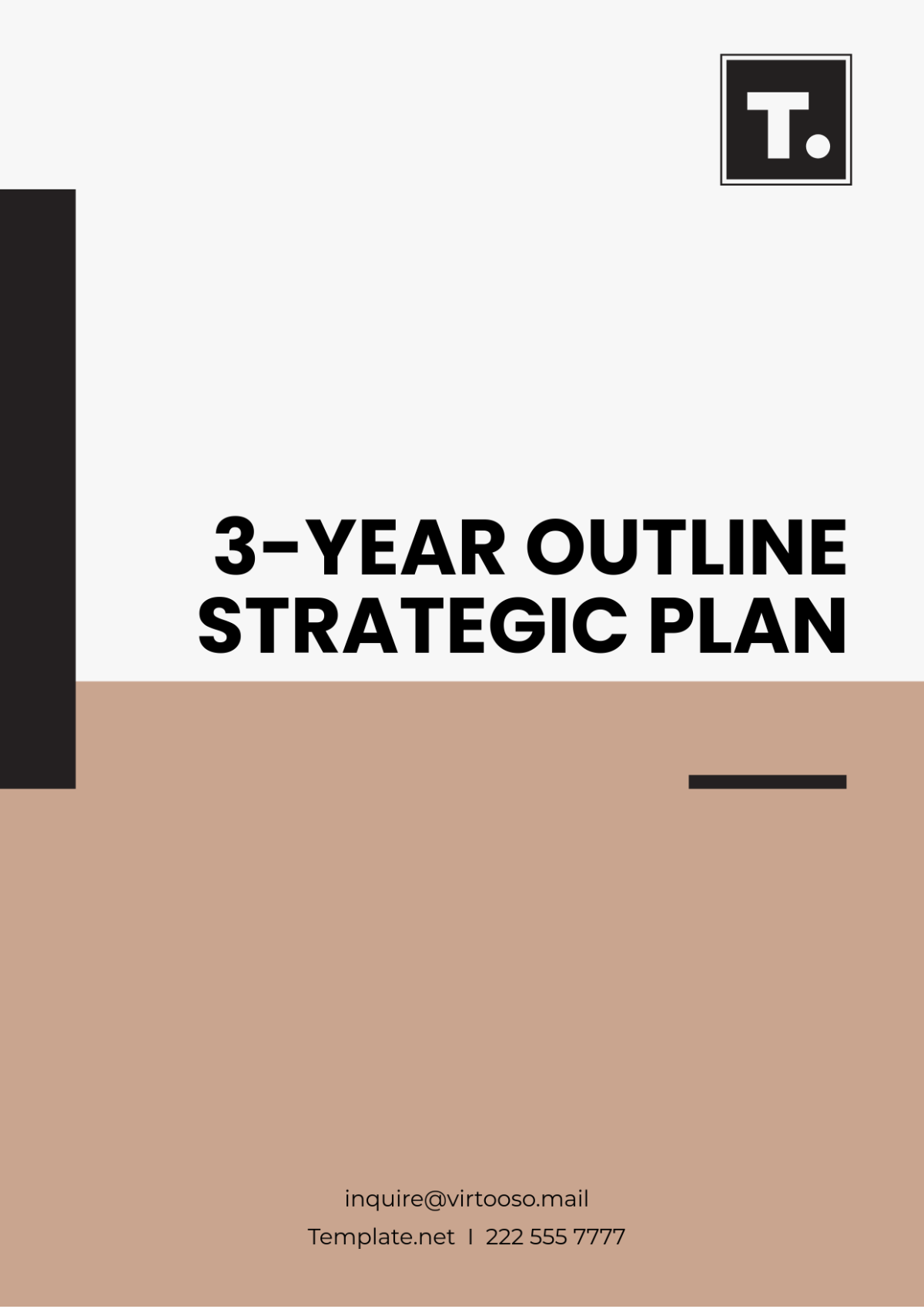Free 3-Year Outline Strategic Plan

I. Executive Summary
Overview of [Your Company Name]
Objectives for the next three years
Key focus areas for growth and efficiency
II. Vision and Mission Statements
A. Vision Statement
Commitment to cutting-edge technology solutions
Recognition as a global leader by 2053
B. Mission Statement
Delivery of superior software products and IT services
Focus on innovation, sustainability, and customer experience
III. Strategic Goals and Objectives
A. Goal 1: Increase Market Share
Objective 1: Achieve a 20% increase in market share by 2053
Objective 2: Expand into three new geographic markets by 2052
Objective 3: Launch two new product lines by Q4 2051
B. Goal 2: Enhance Operational Efficiency
Objective 1: Reduce operational costs by 15% within three years
Objective 2: Improve production efficiency by 25% by Q2 2052
Objective 3: Achieve zero waste in manufacturing by 2053
C. Goal 3: Improve Customer Satisfaction
Objective 1: Increase customer satisfaction scores by 30%
Objective 2: Develop a customer loyalty program by Q1 2051
Objective 3: Achieve a 40% response rate on customer feedback surveys by 2053
IV. SWOT Analysis
A. Strengths
Strong brand recognition
Innovative workforce
Robust distribution network
B. Weaknesses
Limited digital presence
Dependence on key clients
C. Opportunities
Growing demand for cloud computing and cybersecurity services
Potential partnerships with technology firms
Market expansion into Brazil, Vietnam, and Poland
D. Threats
Intense competition
Economic fluctuations
Regulatory changes
V. Key Initiatives and Actions
A. Market Expansion
Conduct market research by Q3 2050
Develop targeted marketing strategies
Establish local partnerships in new markets
B. Operational Improvements
Invest $5 million in automation technologies by Q4 2051
Implement training programs for employees
Conduct regular audits of production processes
C. Customer Engagement
Launch customer loyalty program by Q1 2051
Develop a mobile app for customer access by Q3 2051
Create engaging content through social media platforms
VI. Timeline and Milestones
A. Year 1 (2050)
Q1: Complete initial market research
Q2: Begin developing new product lines
Q4: Launch pilot customer feedback program
B. Year 2 (2051)
Q1: Officially launch a customer loyalty program
Q2: Start implementing automation technologies
Q4: Review customer satisfaction scores
C. Year 3 (2052)
Q1: Expand into identified new markets
Q3: Evaluate operational improvements
Q4: Prepare a comprehensive report on strategic outcomes
VII. Performance Metrics
Market share increase
Cost reduction
Customer satisfaction scores
Loyalty program participation
Production efficiency
VIII. Resource Requirements
Financial Investment: Allocate a budget of $10 million
Human Resources: Hire 20 additional staff members
Technology Investment: Invest in new software and hardware solutions
IX. Risk Management
A. Identified Risks
Regulatory challenges in new markets
Potential supply chain disruptions
B. Mitigation Strategies
Engage local legal experts for regulatory navigation
Develop contingency plans for supply chain management
- 100% Customizable, free editor
- Access 1 Million+ Templates, photo’s & graphics
- Download or share as a template
- Click and replace photos, graphics, text, backgrounds
- Resize, crop, AI write & more
- Access advanced editor
Our 3-Year Outline Strategic Plan Template from Template.net offers a structured approach to planning for the next three years. This editable template lets you map out key goals, objectives, and tactics for your organization’s growth. Fully customizable using our AI Editor Tool, it allows you to adjust timelines, responsibilities, and metrics to suit your needs.





























